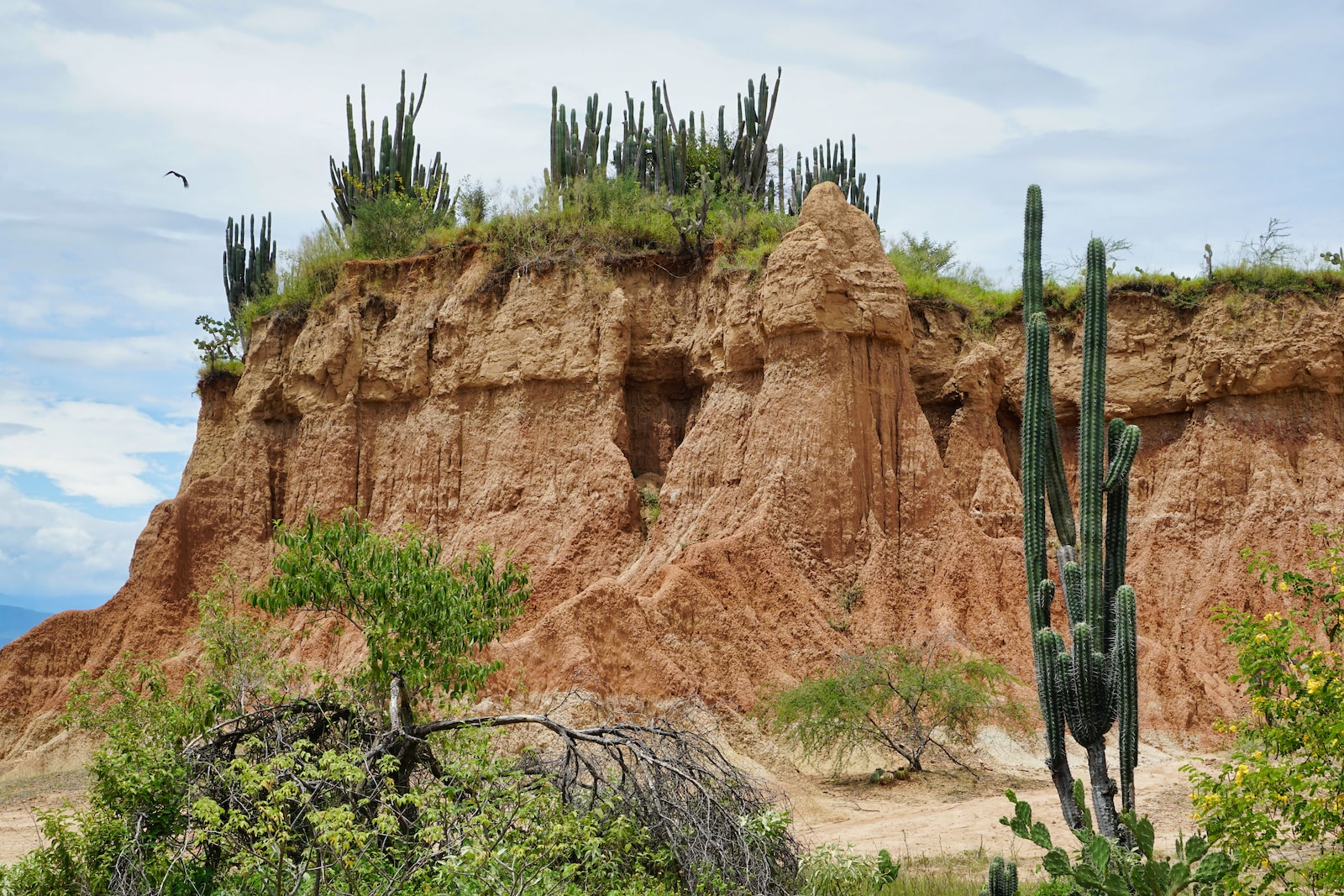- Deserts are characterized by a lack of precipitation and extreme temperatures.
- They cover about one-fifth of the Earth’s land surface and are found on every continent.
- Despite their harsh conditions, many species have adapted to survive in desert environments.
- Tropical deserts are also known as hot deserts and they have the following features:
- Extremely high temperatures during the day and cold temperatures at night.
- Low precipitation, often less than 250mm of rainfall annually.
- High evaporation rates due to the high temperatures, leading to aridity.
- Large fluctuations in temperature between day and night due to the lack of cloud cover.
- Dominance of sand dunes, rock outcrops and gravel plains.
- Sparse vegetation, with plants having shallow roots and waxy leaves to conserve water.
- Animals with adaptive features such as the ability to burrow, large ears to dissipate heat, and the ability to go for long periods without water.
Location:

- Deserts are located in areas with very low precipitation, usually less than 250 mm (10 inches) of rain per year.
- They can be found in a range of latitudes, from the Sahara in Africa to the Atacama in South America.
- Deserts can also be found in areas with high pressure systems, such as the Gobi desert in Asia.
- Hot deserts are found in regions with a hot, dry climate, typically between 15 and 30 degrees latitude north and south of the equator.
- They are often found in the interiors of continents, far from the moderating effects of oceans.
- Examples of hot deserts include the Sahara Desert in Africa, the Arabian Desert in the Middle East, and the Mojave Desert in North America.
- These regions are characterized by high temperatures during the day, often reaching over 40°C , and low temperatures at night, sometimes dropping below freezing.
- Rainfall is infrequent and unpredictable, with annual totals often less than 250mm (10 inches).
- The lack of moisture and extreme temperatures can create a hostile environment for many forms of life, but hot deserts are still home to a surprising variety of plant and animal species that have adapted to these conditions.
Climate:

- The climate of tropical deserts is characterized by high temperatures, with daily temperatures often exceeding 38°C .
- The hot temperatures are due to the high levels of solar radiation received in these areas, which is not offset by cloud cover or precipitation.
- Tropical deserts are generally very dry, with average annual rainfall of less than 250mm (10 inches). Some regions may go for years without any rainfall at all.
- The low humidity in tropical deserts can exacerbate the effects of high temperatures, making it feel even hotter than it actually is.
- In the daytime, temperatures can be scorching hot, while at night they can drop dramatically due to the lack of insulation from clouds or moisture.
- The extreme temperatures and arid conditions in tropical deserts create challenging conditions for life, and only organisms that are highly adapted to these conditions can survive.
- However, the occasional rainfall in tropical deserts can trigger brief bursts of activity and life, as plants bloom and animals emerge to take advantage of the moisture.
Biomes:
- There are four main types of desert biomes: hot and dry, semiarid, coastal, and cold.
- Hot and dry deserts are characterized by extreme temperatures and very low precipitation, such as the Sahara in Africa.
- Semiarid deserts have slightly higher precipitation levels and can support more vegetation, such as the Chihuahuan Desert in North America.
- Coastal deserts are found in areas where cold ocean currents create a dry climate, such as the Namib Desert in Africa.
- Cold deserts have low precipitation levels and are characterized by cold temperatures, such as the Gobi desert in Asia.
Adaptations:

- Animal Adaptations:
- Nocturnal behavior: Many desert animals are active at night and rest during the day to avoid the extreme heat.
- Burrowing: Some animals such as tortoises, snakes and rodents burrow deep into the ground to avoid the heat of the day.
- Water storage: Desert animals such as camels, kangaroo rats, and foxes have adaptations that allow them to store water for long periods of time.
- Adapted body structures: Many animals have adapted to the desert environment with unique body structures. For example, the fennec fox has large ears that help it dissipate heat, and the long-legged jerboa has long legs that help it move quickly over the sand.
- Camouflage: Many animals have evolved to blend in with the desert landscape, making them difficult for predators to spot.
- Plant Adaptations:
- Succulent plants: Plants such as cacti and agave have adapted to store water in their fleshy leaves and stems, allowing them to survive in arid environments.
- Deep roots: Many desert plants have deep roots that help them reach water stored deep below the surface of the soil.
- Reduced leaf surface: Many desert plants have reduced the size of their leaves or have adapted to grow leaves that are covered in hair or spines. This helps reduce water loss through transpiration.
- Photosynthesis adaptations: Some desert plants, such as the creosote bush, have adapted to carry out photosynthesis at night when temperatures are cooler and moisture loss is minimized.
- Short life cycles: Many desert plants have adapted to reproduce quickly during the brief periods of rain that occur in the desert, and then go dormant during dry spells.
Threats:
- Desert biomes are threatened by human activities such as overgrazing, mining, and development.
- Climate change is also a major threat to desert ecosystems, with rising temperatures and decreased precipitation levels altering the delicate balance of the biome.




